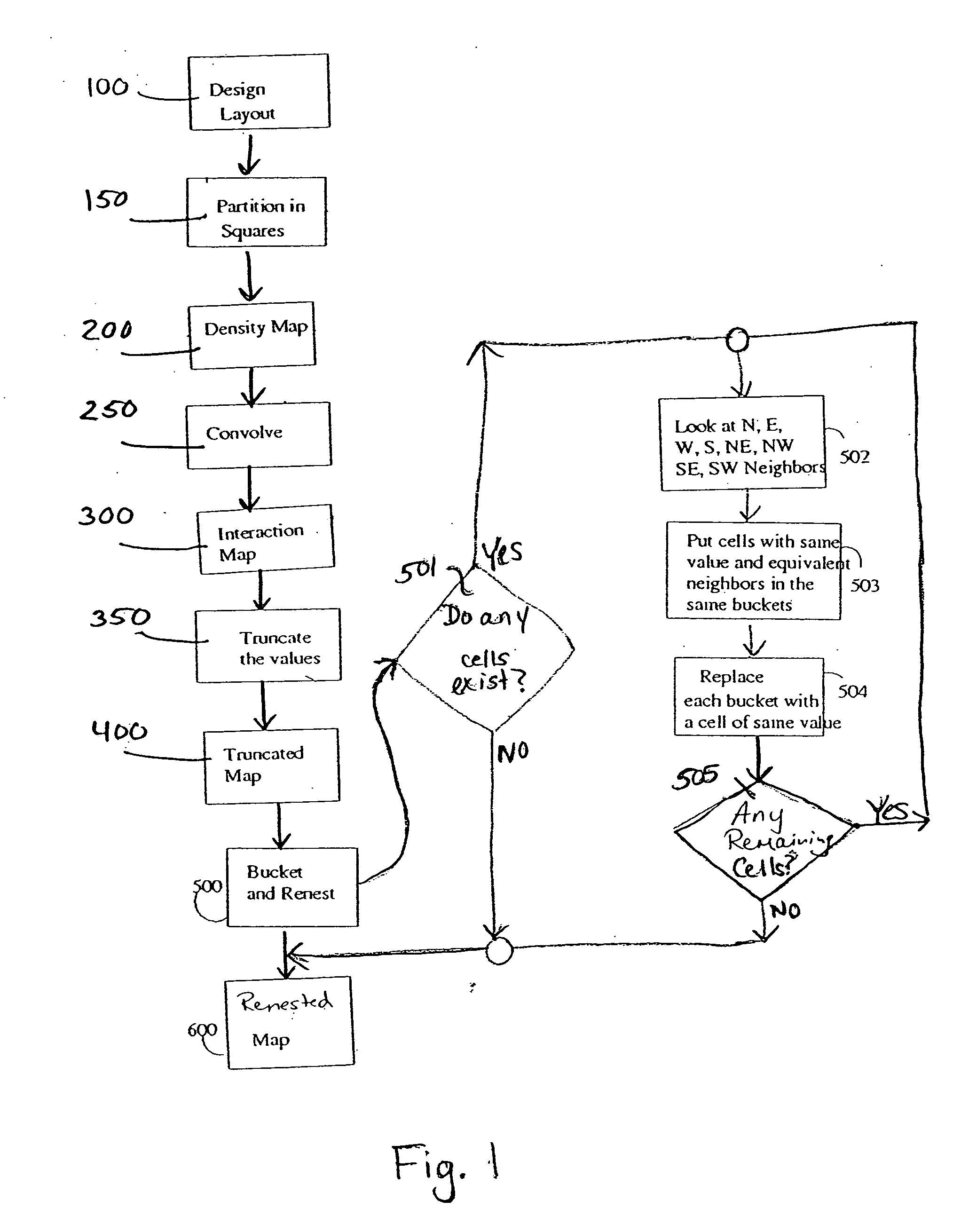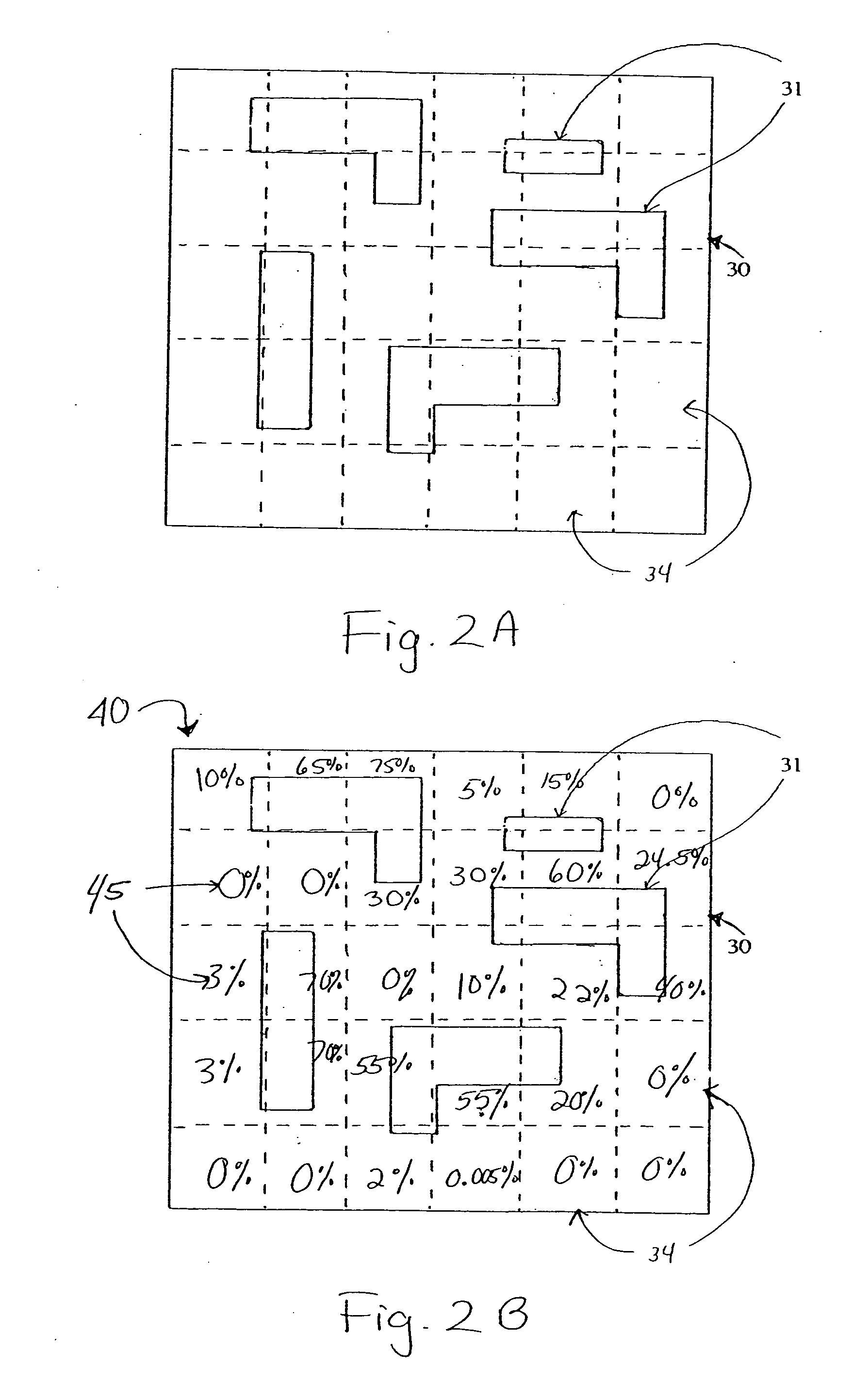Renesting interaction map into design for efficient long range calculations
a technology of interaction map and design data, applied in the field of optical lithography, can solve the problems of reducing circuit performance, reducing the efficiency of circuits, so as to avoid flattening of the desired design data hierarchy, efficient, easily and cost effective, and efficiently and cost effective the effect of rebuilding the design data hierarchy
- Summary
- Abstract
- Description
- Claims
- Application Information
AI Technical Summary
Benefits of technology
Problems solved by technology
Method used
Image
Examples
Embodiment Construction
)
[0041] In describing the preferred embodiment of the present invention, reference will be made herein to FIGS. 1-4C of the drawings in which like numerals refer to like features of the invention.
[0042] The foregoing invention is ultimately for use in optical lithography to correct for any distortions on a photomask having desired circuit patterns, for the accurate projection thereof onto photoresist-coated wafers. In so doing, the invention provides model-based optical lithography simulations that enforce a desired design data hierarchy for long-range calculations, regardless of the size of the region of interest (ROI).
[0043] In accordance with the invention, the desired design data hierarchy is enforced by either maintaining an original, desired design data hierarchy or by rebuilding a design data hierarchy when the original, desired design data hierarchy has been either partially or completely destroyed, such as by processing conditions. However, the invention is particularly u...
PUM
| Property | Measurement | Unit |
|---|---|---|
| wavelengths | aaaaa | aaaaa |
| wavelengths | aaaaa | aaaaa |
| wavelengths | aaaaa | aaaaa |
Abstract
Description
Claims
Application Information
 Login to View More
Login to View More - R&D
- Intellectual Property
- Life Sciences
- Materials
- Tech Scout
- Unparalleled Data Quality
- Higher Quality Content
- 60% Fewer Hallucinations
Browse by: Latest US Patents, China's latest patents, Technical Efficacy Thesaurus, Application Domain, Technology Topic, Popular Technical Reports.
© 2025 PatSnap. All rights reserved.Legal|Privacy policy|Modern Slavery Act Transparency Statement|Sitemap|About US| Contact US: help@patsnap.com



